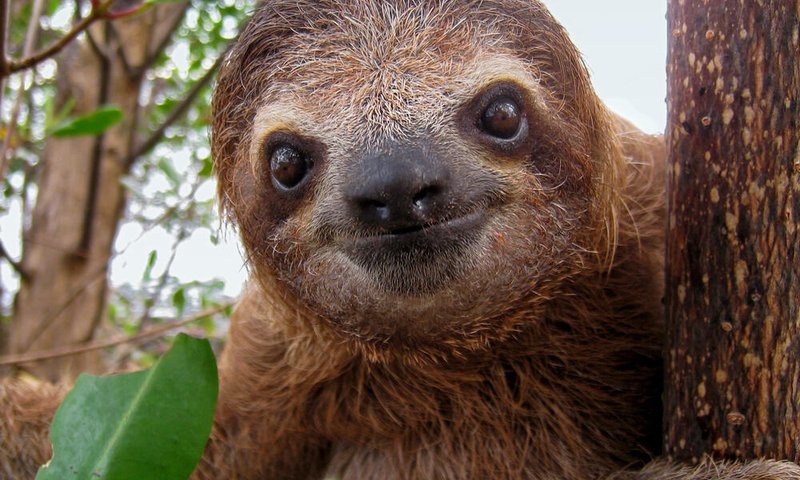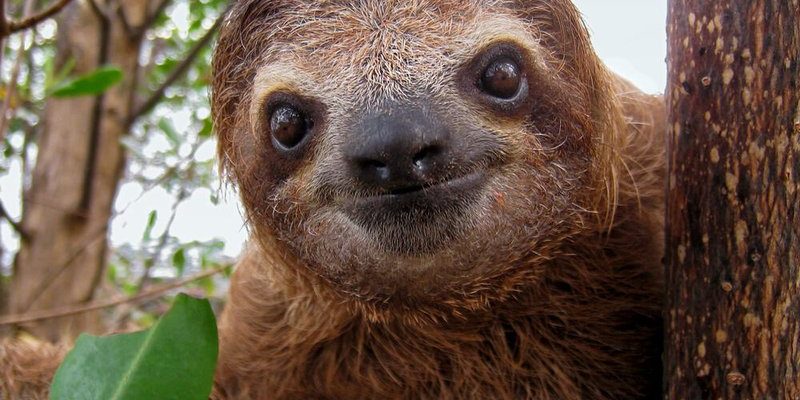
Understanding the status of sloths isn’t just about their charming nature; it’s about recognizing the role they play in the ecosystems of Central and South America. You could think of sloths as the tranquil caretakers of their rainforest homes, slowly munching on leaves while facilitating the health of the trees they inhabit. But just like any good team player, their survival is at risk due to habitat loss, climate change, and human impact. So, let’s take a deep breath and explore the current state of sloths and what we can do to help them thrive.
Sloth Species and Their Status
There are six main species of sloths, and they can be categorized into two groups: two-toed sloths and three-toed sloths. The most recognized among them is the Bradypus variegatus, or the brown-throated three-toed sloth. Each species has its own unique characteristics and habitats, but they all face similar threats.
You might be wondering why we should care about these specific species. Well, some sloths are considered more endangered than others. For instance, the Pygmy Three-Toed Sloth, which is found only on a small island in Panama, is critically endangered. With only around 100 individuals left, its situation is dire. This type of sloth is a prime example of how localized threats can push a species to the brink.
The Threat of Deforestation
One of the biggest dangers sloths face is deforestation, primarily due to agricultural expansion and urban development. When their forest homes are cut down, sloths lose not just their shelter but also their food sources. Think of it like trying to order your favorite meal at a restaurant that has shut down; suddenly, it’s not just hard to find a seat, but your favorite dishes are off the menu!
Deforestation is happening at an alarming rate in Central and South America. In places like Brazil, swaths of the Amazon rainforest are cleared for cattle ranching and soy production. This not only impacts the sloths but also the entire biodiversity of the region, affecting countless other species that call the forest home.
Climate Change Impacts
Climate change also plays a significant role in the endangerment of sloths. As temperatures rise and weather patterns shift, the delicate balance of their ecosystems becomes disrupted. For sloths, who rely heavily on their environment for food and shelter, even slight changes can have severe implications.
For instance, if the leaves they feed on become scarce due to changing rainfall patterns, sloths will struggle to find enough food. Imagine having to search for your meals in a neighborhood where your favorite shops have closed down. It becomes a game of survival, and for sloths, every little bit of change counts.
Human Interaction and Its Consequences
Humans are an undeniable force in the fate of sloths. Beyond deforestation, things like road construction can lead to more sloths being hit by cars. Many sloths are also captured and exploited for tourism or kept as pets, which is not only harmful to their well-being but can also contribute to their decline in the wild.
It’s a tough reality, but we need to acknowledge the impact we have. The key here is education—understanding that sloths are best left in their natural habitats. This can help shift cultural perceptions and encourage more humane interactions with wildlife.
Conservation Efforts in Play
Fortunately, many organizations are working tirelessly to protect sloths and their habitats. Conservation initiatives often focus on creating protected areas, educating local communities, and advocating against deforestation. These efforts are vital, especially in areas where sloths are critically endangered.
For example, organizations are planting trees and restoring habitats to allow sloths to thrive. They’re also working on community education programs to promote sustainable practices that don’t harm the environment. Every little action counts, and you can be part of the solution by supporting these initiatives.
What You Can Do to Help Sloths
You might be wondering, “What can I do to help sloths?” Luckily, there are several actionable steps you can take. First, consider supporting wildlife conservation organizations that focus on sloth habitats. Your donations can make a difference, whether it’s through funding for protected areas or educational programs.
Another simple way to aid sloths is by advocating for sustainable products. Reducing your use of palm oil and supporting eco-friendly brands can help minimize deforestation. It’s like choosing to shop at a farmer’s market instead of a big-box store—you’re making a conscious decision to support local and sustainable practices.
Spreading Awareness
Don’t underestimate the power of spreading the word about sloth conservation. Sharing information on social media, discussing sloth endangerment with friends, or even organizing community events can help raise awareness. The more people understand the plight of sloths, the more likely they are to support conservation efforts.
The Importance of Biodiversity
Sloths aren’t just wonderful in their own right; they also play a critical role in their ecosystems. By munching on leaves, they help to control vegetation, which can contribute to the overall health of the forest. Think about it: they’re like nature’s gardeners, ensuring that their home remains vibrant and full of life.
A decline in sloth populations can have ripple effects on other species and ecosystem dynamics. This highlights the importance of preserving not just sloths but all species within their habitats. When you protect one, you help protect many.
Future Outlook for Sloths
So, what does the future hold for sloths? Well, it’s a mixed bag. While the threats they face are real and pressing, there’s also a growing movement toward conservation. More people are becoming aware of the issues and are eager to take action.
It’s heartening to see communities and organizations teaming up to ensure that sloths don’t just become a passing trend in wildlife conservation. With continued efforts, we can foster an environment where sloths are celebrated and allowed to thrive.
In conclusion, the question “Is the sloth endangered?” is not just a simple label—it encapsulates a complex web of ecological issues and human impacts. As we sip our coffee and admire these slow-moving creatures, let’s remember that they need our help. By supporting conservation efforts and spreading awareness, we can ensure that sloths continue to roam the forests for generations to come. Together, we can make a difference—not just for sloths but for the vibrant ecosystems they inhabit. Let’s be the voice for those who can’t speak for themselves.

